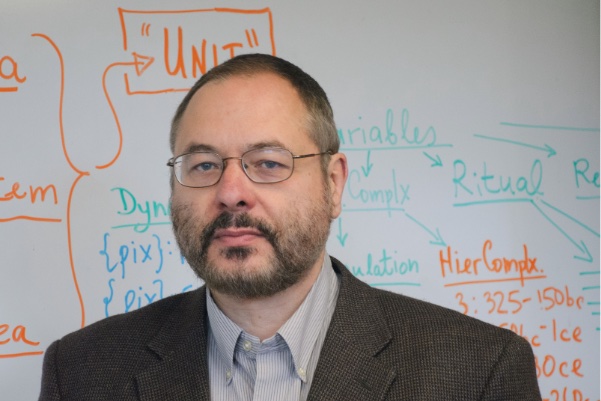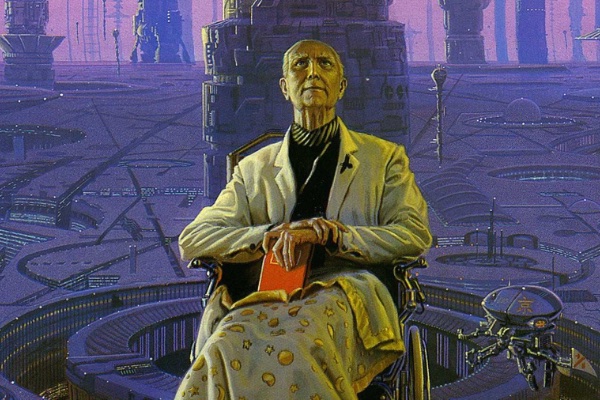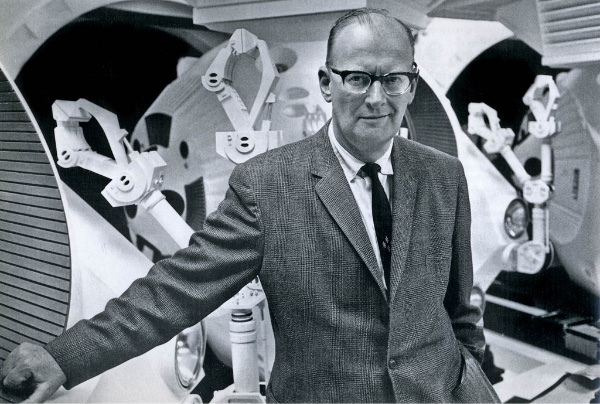ANTONIO LÓPEZ | Tungsteno
Looking to the past to understand what might happen in the future is a characteristic strategy of 'big history', a discipline that, in recent years, has been popularised by prominent communicators such as Noah Yuval Harari, Steve Pinker and Jared Diamond. Predictive history, which seeks to anticipate events, does not always use orthodox methods. In fact, throughout the ages, the most daring voices have been found, not among historians themselves, but among scientists who, from different perspectives, have approached it without prejudice and seeking to apply methods from biology or mathematics to predict the future. Science fiction literature is also an important field in terms of foreseeing what is to come. Even if there is no methodology behind its visions, we do find a prodigious imagination.

Biologist and history professor, Peter Turchin has created a mathematical model to detect patterns in long-term social-historical processes. Credit: Peter Turchin.
Peter Turchin and the mathematics of cliodynamics
Although the pandemic has taken millions of people by surprise, the same cannot be said for Peter Turchin (1957), who predicted ten years ago in the journal Nature that 2020 would be a horrible year. A biologist by training and professor of the history of civilisations at the University of Connecticut, Turchin has created a mathematical model to find patterns of human behaviour in data from the last 10,000 years of history.
This is the basis of 'cliodynamics', a scientific perspective christened by Turchin himself that, far removed from any sort of magical thinking, has a basis in applied science, as its creator argues. The same scientist who spent almost 30 years studying parasitic species, such as the dung beetle, shares his predictions about the collapse of the United States on Twitter and believes he has found, at the very least, a distinguishable pattern: every 50 years, a long period of instability and political violence occurs in the US. Although his forecasts were met with scepticism by the scientific community, time has proved him right and, unfortunately, his dire predictions do not end in 2021.

From the relevance of smartphones to the consolidation of renewable energy sources, Isaac Asimov's vision of the future was born from fiction, through Hari Seldon, the protagonist of the Foundation saga. Credit: Wikimedia Commons.
Beyond fiction: Asimov's psychohistory
A reflection of Peter Turchin can be seen in the science fiction character created by another of the great visionaries of recent history: the mathematician Hari Seldon, the protagonist of the Foundation saga by Isaac Asimov (1920-1992). Seldon drew on the life cycle of a biological organism to foretell the rise and fall of an empire, a brilliant fictional discipline for predicting large-scale human behaviour that Asimov dubbed psychohistory.
However, beyond the machinations of his characters, Asimov himself already forsaw in 1983 what the reality in which we live today would be like, when he published an article in the Canadian newspaper The Star in which he foretold of issues such as education based on "computer literacy" or the relevance of the smartphone in our society: "An essential side product, the mobile computerized object, or robot, is already flooding into industry and will, in the course of the next generation, penetrate the home." The former biochemistry professor, as well as being a prolific science fiction writer, also guessed correctly on the ubiquity of machines and their incorporation into the labour market. Although he did not focus on the pandemic, and aimed for 2019 rather than 2020, Asimov also predicted the rise of renewable energy sources: "The beginning of an era in which a significant part of the Earth's energy will come from the Sun."

He was able to anticipate the teleworking model that the coronavirus pandemic has imposed, in addition to concepts such as touch screens or voice assistants. Credit: Wikimedia Commons.
Arthur C. Clarke: 2021, a workplace odyssey
In line with Asimov's technological presages are those of Arthur C. Clarke (1917-2008), the scientist and writer who, convinced that instant communications and automation would completely change society, guessed in the 1970s what teleworking would be like today: "The day is coming when office workers and intellectuals will do their work without leaving their homes." What he did not foresee was that, in addition to technological progress, a pandemic would be partly to blame.
Author of the novel 2001: A Space Odyssey, he even imagined the concept of touch screens and voice assistants, and correctly predicted how the personal computer would be the key working tool: "you’ll be able to exchange any amount of tabular, visual or graphical information." In 1960, Clarke published A Vision of the Future, in which he painted a picture that was unthinkable and almost irrational at the time, and which, in his own words, increased the chances of his predictions coming true. The writer even went so far as to define the pathology that would trigger this irruption of technology in society: "infomaniacs," a term he coined to describe those addicted to knowing what is going on at all times or, in the parlance of today, being connected.
What do these visionaries have in common? According to journalist Graeme Wood, who recently interviewed Turchin himself, they all come from scientific disciplines other than history, which allows them to approach it "without prejudice, with a fresher perspective." It is an approach far removed from the more traditional analytical tools and can clash with those of orthodox historians. As Pablo Rodríguez-Sánchez, a specialist in scientific computing at the Netherlands eScience Center, explained in an article in The Conversation, the current situation arising from the COVID-19 pandemic has put the spotlight on the predictive capacity of mathematical models, something already explored by Peter Turchin. However, "contrary to popular belief, mathematical models do not answer the question ‘what will happen?’, but rather the question ‘what will happen if?’," something which, according to Rodríguez-Sánchez, is both the greatest strength and the greatest weakness of these analytical tools compared to those of historians.
· — —
Tungsteno is a journalism laboratory to scan the essence of innovation. Devised by Materia Publicaciones Científicas for Sacyr’s blog.
